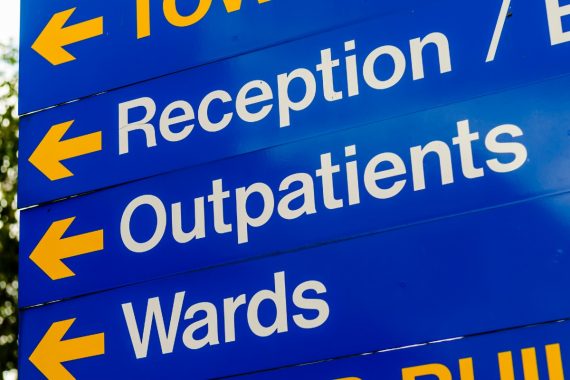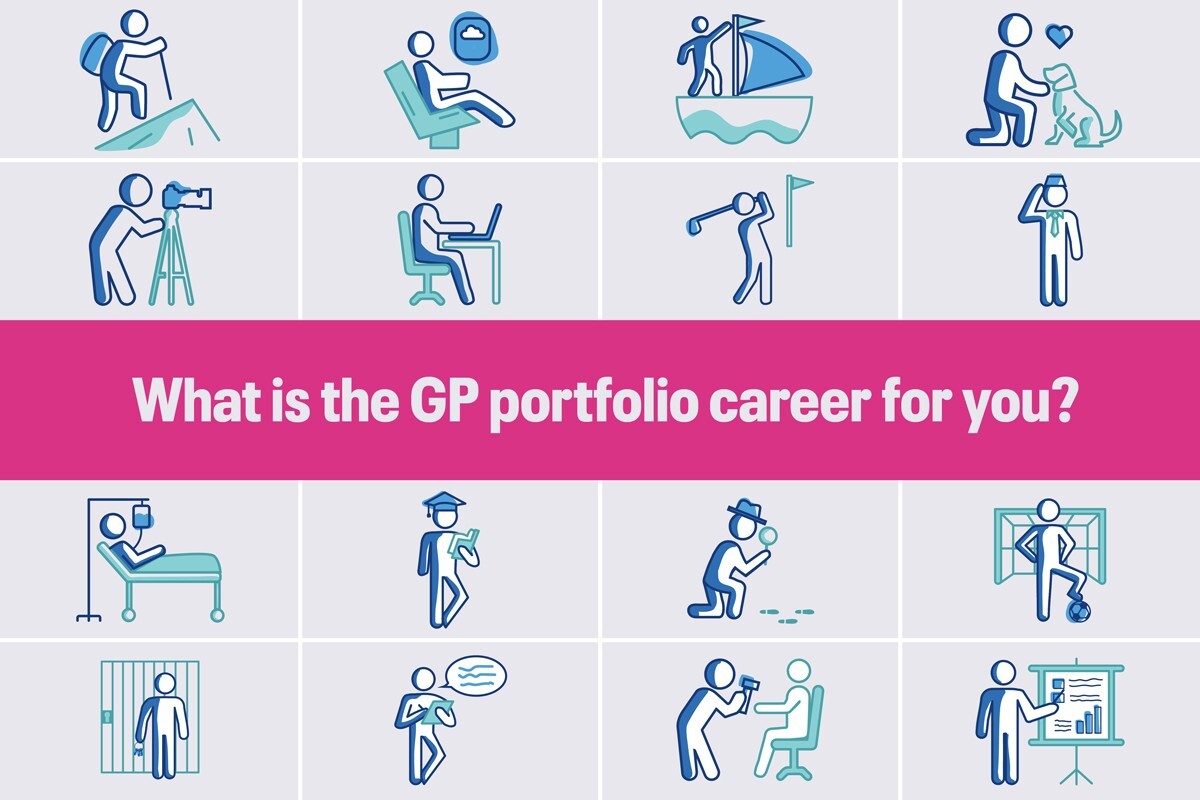Most outpatient care in community in 10 years, says long-awaited Government plan

The Government will lay out plans to move ‘the majority of outpatient care’ outside of hospitals and into the community by 2035, as part of its 10-year plan for the NHS.
Prime Minister Sir Keir Starmer will finally launch the plan tomorrow (Thursday), pledging to ‘bring the NHS closer to home’ with new neighbourhood ‘health centres’ which will be open 12 hours a day, six days a week ‘within local communities’.
The plan will also pledge to offer same-day GP appointments, saying that ‘for those who need it’, they will get ‘a digital or telephone consultation the same day they request it’ calling their GP practice.
The Government wants ‘the majority of outpatient care’ to happen outside of hospitals by 2035, so as part of the plan, the neighbourhood health centres will bring ‘historically hospital-based services into the community’ including diagnostics, post-operative care and rehab.
It said that ‘new digital tools’ will allow GPs ‘to refer patients quicker’, and a wider range of services ‘available on people’s doorsteps’ will mean less need to attend hospital for ophthalmology, cardiology, respiratory medicine and mental health.
The health centres will also offer services like debt advice, employment support and stop smoking or weight management.
‘Neighbourhood teams’ based within these centres will include nurses, doctors, social care workers, pharmacists, health visitors, palliative care staff and paramedics.
And new contracts will be introduced ‘which encourage and allow practices to cover a wider geographical area’.
‘It means smaller practices in the catchment area will get more support to ensure the right access is in place so that everyone can access their GP when they need to,’ it added.
It will also promise to roll out ‘groundbreaking new tools’ over the next two years to support GPs, including artificial intelligence scribes, which the Government claimed can save ‘the same time as adding 2,000 more doctors into general practice’.
The full plan will be released tomorrow but some details have already been revealed, including a pledge to prioritise UK medical graduates for foundation and specialty training, and a review of the Carr-Hill formula for GP funding.
The plan is also expected to include a greater emphasis on training GPs over hospital doctors, after the chancellor specified GP training as a priority investment area in long-term spending review.
Sir Keir said: ‘Our 10-year plan will fundamentally rewire and future-proof our NHS so that it puts care on people’s doorsteps, harnesses game-changing tech and prevents illness in the first place.
‘That means giving everyone access to GPs, nurses, and wider support all under one roof in their neighbourhood – rebalancing our health system so that it fits around patients’ lives, not the other way round.
‘This is not an overnight fix, but our Plan for Change is already turning the tide on years of decline with over four million extra appointments, 1,900 more GPs and waiting lists at their lowest level for two years.’
Health secretary Wes Streeting said: ‘By shifting from hospital to community, we will finally bring down devastating hospital waiting lists and stop patients going from pillar to post to get treated.’
The BMA’s GP committee said that the detailed plans are needed regarding how this will be delivered ‘with costed investment’.
BMA GPC chair Dr Katie Bramall said: ‘We are committed to working with the Government in delivering a new contract for GPs, but we now need to scrutinise the detail within the plan regarding emerging neighbourhood structures which remain untested.
‘Without a commitment to a guaranteed level of investment that protects and builds neighbourhood services embedded in general practice, there risks a serious mismatch between ambition and capacity.
‘We have a burgeoning crisis of unemployed GPs today, so we need rapid solutions to hire those fully trained doctors looking for work now, ahead of expanding numbers tomorrow, lest there be no jobs to go to as practices lack funds to hire them.’
She added that the creation of neighbourhood health centres ‘must not divert staff or resources’ from local GP practices and must not come at the cost of ‘ignoring dilapidated general practice estates’ that are ‘being left to wither’.
Dr Bramall added: ‘GPs lie at the very heart of our neighbourhoods and communities so if wholescale NHS reform is to work we need effective engagement of local GP leadership from the ground up.
‘Expanding geographical reach and services will require a modern and sustainable GP contract for decades to come; to help facilitate and expand practice services and to support GPs and their teams who are best placed to conduct the NHS orchestra.
‘If the Government is genuinely committed to delivering meaningful transformation of care over the coming decade, then crucial to any effective implementation will be the need to listen and engage with GP leadership to shape and inform the direction of travel.’
RCGP chair Professor Kamila Hawthorne agreed that more detail is needed on how what is being proposed will actually be delivered and how it will be funded.
She said: ‘For example, commitments to bring more care under one roof will require enough available space, in the context that many GP practices are in dire need of renovation and unable to meet the current needs of patients.
‘As well as the focus on neighbourhood health centres, today’s announcement also describes much greater reliance on technology and AI.
‘With so much GP-time taken up with bureaucracy, using technology to ease this burden is certainly something to explore – and something some GPs will already be doing – to allow them to spend more time with patients.
‘What’s important is that initiatives are piloted in the first instance and carefully evaluated to ensure that there are no adverse effects on patient safety or their data privacy.
‘It also has to be said that whilst the potential for greater and better use of technology is immense, major developments feel a long way off when many GPs are reporting that their basic IT systems are slow, inefficient and can’t communicate with one another effectively.’
Tony Blair’s Labour Government introduced a 48-hour appointment target for GP surgeries but this was scrapped by the coalition Government shortly after the 2010 election. The target was widely criticised for ending patients’ ability to book appointments with a GP beyond the same or next day.
Labour has long wished to bring back the target, including in comments made by then shadow health secretary Andy Burnham in 2013, amid criticism from GP leaders.
Portfolio careers
What is the right portfolio career for you?

Related Articles
READERS' COMMENTS [4]
Please note, only GPs are permitted to add comments to articles














I am sorry, but this is nonsense!
In big cities, the patients live close to hospitals, so have no problem going to the hospital site to attend Outpatients depts for consultations, imaging, investigations, procedures : all the equipment and support services and staff are on-site too, so everything is fine;
In rural areas, these services would have to be provided in an outpatient clinic setting, with support services and other equipment handy or on-site. Now in some locations, this could be done in a large GP surgery in spare rooms, or similar building, like a Health Centre; whilst in others, the ready-present and most suitable location is the Cottage Hospital Outpatients Department.
These services should be provided in existing facilities in Cottage Hospitals, (or existing DGH Outpatients), or larger Health Centres, where other investigations such as imaging and blood letting, dressings, etc, and a Resus Team in case of adverse events, are all on hand. There is no need for building of new OPDs in community locations. It would only benefit property developers, not NHS, patients, or staff, and by diluting service provisions, would be worse care and yat still more expensive, due to needing to provide duplicate crash teams, radiography, support facilities, etc.
OPD is not broke, it is just short of medical staff. Do NOT fix it apart from employing more doctors!!!
Costly, stupid, done before ,unimaginative, poorly thought through. Wes needs to look up the meaning of radical . Anything proposed so far is just rearranging the deck chairs on the titanic.
This could have been written 15 years ago. Exactly the same as before. We have had Darzi centres and other various equivalents – all failed!
The NHS currently spends around £3,300 per head per year, around £250,000 lifetime.
Can we opt out and have our money please? Because most of us could spend it rather more effectively than these clowns.